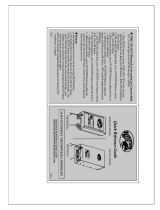
6
Table of contents
Main Features .......................................... 4
Checking supplied accessories.............. 5
Quick Start Guide............................. 8
Getting started
Using this manual ................................. 10
Step 1 Preparing the power supply ... 12
Installing the battery pack ............ 12
Charging the battery pack............. 13
Connecting to a wall outlet ........... 15
Step 2 Setting the date and time ........ 16
Step 3 Inserting a cassette ................... 19
Recording – Basics
Recording a picture............................... 20
Shooting backlit subjects
– BACK LIGHT ........................ 27
Shooting in the dark – NightShot/
Super NightShot ...................... 27
Self-timer recording ....................... 29
Checking the recording
– END SEARCH / EDITSEARCH /
Rec Review ...................................... 30
Playback – Basics
Playing back a tape ............................... 31
To display the screen indicators
– Display function ................... 32
Viewing the recording on TV .............. 35
Advanced Recording
Operations
Recording a still image on a tape
– Tape Photo recording ................. 36
Adjusting the white balance
manually .......................................... 40
Using the wide mode ........................... 41
Using the fader function ...................... 42
Using special effects – Picture effect .. 45
Using special effects – Digital effect ... 46
Using the PROGRAM AE function .... 49
Adjusting the exposure manually ...... 52
Focusing manually................................ 53
Interval recording ................................. 55
Frame by frame recording
– Cut recording ............................... 57
Advanced Playback
Operations
Playing back a tape with picture effects
........................................................... 58
Playing back a tape with digital effects
........................................................... 59
Enlarging images recorded on tapes
– Tape PB ZOOM ........................... 60
Quickly locating a scene using the zero
set memory function ...................... 61
Searching the boundaries of recorded
tape by title – Title search ............. 62
Searching a recording by date
– Date search ................................... 63
Searching for a photo
– Photo search/Photo scan ........... 65
Editing
Dubbing a tape ...................................... 67
Dubbing only desired scenes
– Digital program editing
(on tapes) ......................................... 69
Using with analog video unit and your
computer
– Signal convert function............... 80
Recording video or TV programs ....... 81
Inserting a scene from a VCR
– Insert editing ................................ 84
Audio dubbing ...................................... 86
Superimposing a title ........................... 90
Making your own titles ........................ 93
Labeling a cassette ................................ 94
Customizing Your Camcorder
Changing the menu settings................ 96
“Memory Stick” Operations
Using a “Memory Stick”
– introduction................................ 104
Recording still images on “Memory
Stick”s
– Memory Photo recording ......... 112
Recording an image from a tape as a
still image ...................................... 118
Superimposing a still image in the
“Memory Stick” on an image
– MEMORY MIX .......................... 121
Recording moving pictures on
“Memory Stick”s
– MPEG movie recording ............ 126





















